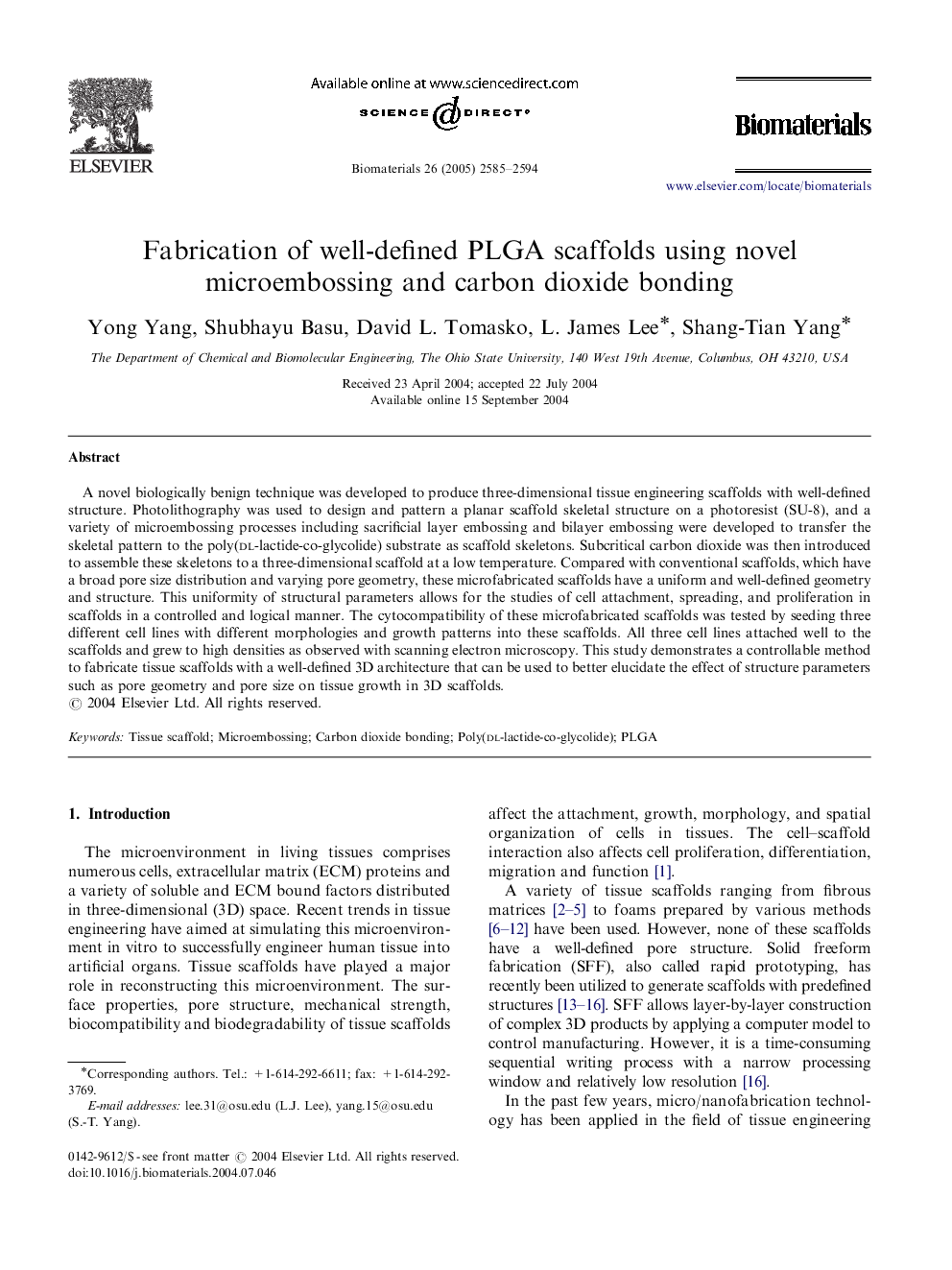| Article ID | Journal | Published Year | Pages | File Type |
|---|---|---|---|---|
| 12825 | Biomaterials | 2005 | 10 Pages |
A novel biologically benign technique was developed to produce three-dimensional tissue engineering scaffolds with well-defined structure. Photolithography was used to design and pattern a planar scaffold skeletal structure on a photoresist (SU-8), and a variety of microembossing processes including sacrificial layer embossing and bilayer embossing were developed to transfer the skeletal pattern to the poly(dl-lactide-co-glycolide) substrate as scaffold skeletons. Subcritical carbon dioxide was then introduced to assemble these skeletons to a three-dimensional scaffold at a low temperature. Compared with conventional scaffolds, which have a broad pore size distribution and varying pore geometry, these microfabricated scaffolds have a uniform and well-defined geometry and structure. This uniformity of structural parameters allows for the studies of cell attachment, spreading, and proliferation in scaffolds in a controlled and logical manner. The cytocompatibility of these microfabricated scaffolds was tested by seeding three different cell lines with different morphologies and growth patterns into these scaffolds. All three cell lines attached well to the scaffolds and grew to high densities as observed with scanning electron microscopy. This study demonstrates a controllable method to fabricate tissue scaffolds with a well-defined 3D architecture that can be used to better elucidate the effect of structure parameters such as pore geometry and pore size on tissue growth in 3D scaffolds.
